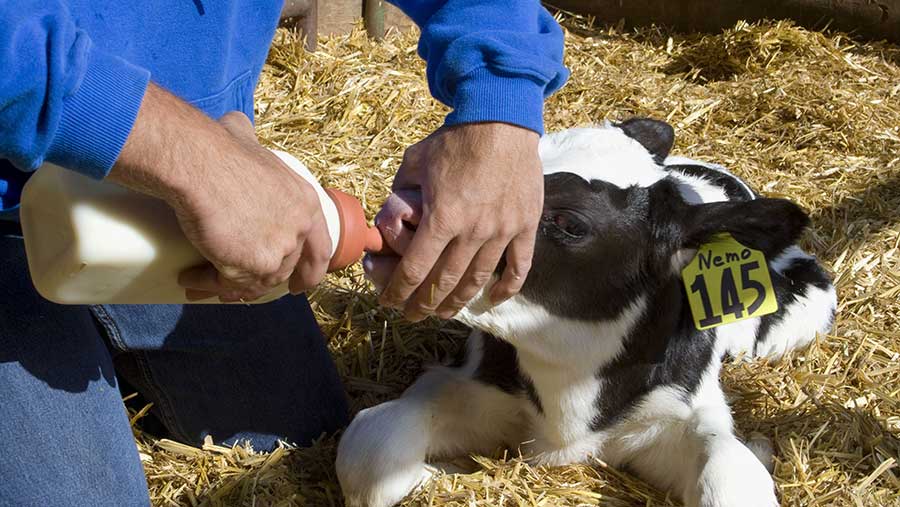New colostrum campaign aims to slash farm antibiotics use
 © Design Pics Inc/REX/Shutterstock
© Design Pics Inc/REX/Shutterstock Farmers and vets are being urged to get behind a campaign that aims to further reduce the use of antibiotics in farm animals.
The #ColostrumIsGold campaign, created by the Responsible Use of Medicines in Agriculture (Ruma) Alliance, will promote best practice on getting “quality, quantity and quickness” of colostrum delivery right.
It will underline that responsible use of antibiotics starts with newborn calves, lambs and piglets receiving the right amount of colostrum within a couple of hours of birth – something all farmers have the potential to achieve.
See also: How sheep colostrum trials are helping to reduce antibiotic use
Ruma chairman Gwyn Jones said as a farmer he recognises the pressures at lambing and calving, and just how easy it can be to take shortcuts with the all-important first feed.
“But it was a wake-up call when I found out calves receiving insufficient colostrum at birth are more than twice as likely to develop respiratory disease, and can have mortality rates as high as 13%,” he said.
“Too often we see the animal start to suck or we give it a feed, and don’t think about the actual quantity of colostrum it consumes immediately after birth.
“All these factors have an enormous impact on the levels of antibodies in the bloodstream 24 hours later, and on the subsequent health of the animal and its need for antibiotic treatment during its whole life.”
Colostrum testing
Better colostrum management is an incredible opportunity to ensure better health for the future, cut antibiotics use and produce a more valuable animal for onward rearing, he added.
AHDB research manager Jenny Gibbons said the levy body’s recent “Calf to Calving” campaignm focusing on youngstock rearing, has seen nearly 40% of attendees go on to buy equipment to test the quality of colostrum.
“With recent figures from the Royal Veterinary College indicating just 31% of dairy farmers have been testing the quality of the colostrum before feeding it, this uptake is good news,” said Dr Gibbons.
“Another area to tackle is time of feeding. Only 5% are feeding within the ideal two hours after birth. Changing these practices would make a huge difference to calves for onward beef rearing as well as replacement heifers.”
Antibiotics resistance
Sheep vet Fiona Lovatt said lambs receiving insufficient colostrum at birth is behind one of the sheep industry’s biggest antibiotics use hotspots, in what is otherwise a low-use sector.
She says the sheep sector should not be relying on the use of preventative antibiotics – because of image, but also the very real problem of antibiotics resistance.
Veterinary lead at the AHDB and pig specialist Mandy Nevel said baby pigs need colostrum too, to maintain body temperature as well as protect them against disease.
Farmers and vets looking for more information should search for the #ColostrumIsGold hashtag on Twitter, or go to the FarmAntibiotics.org website to be signposted to useful tools, resources and case studies from 1 February.
